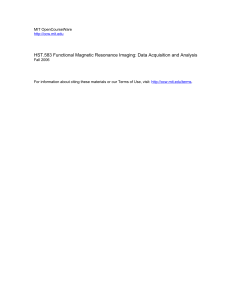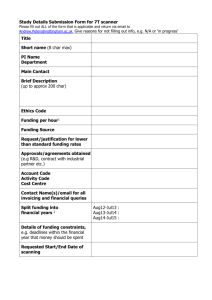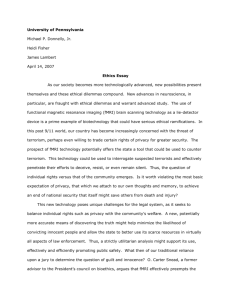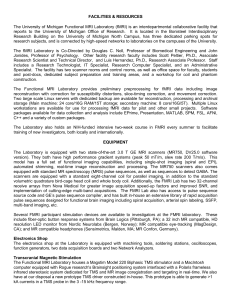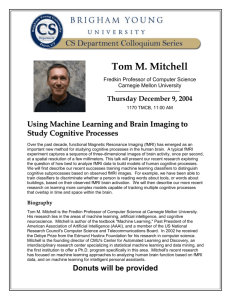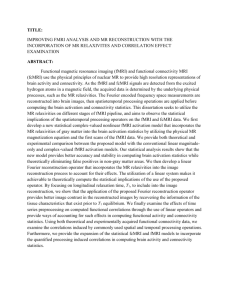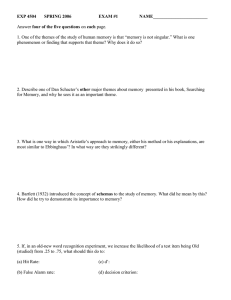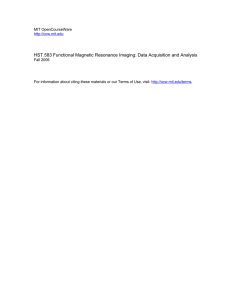SOP053 Title: Animal Use with the TTNI Revision No:
advertisement
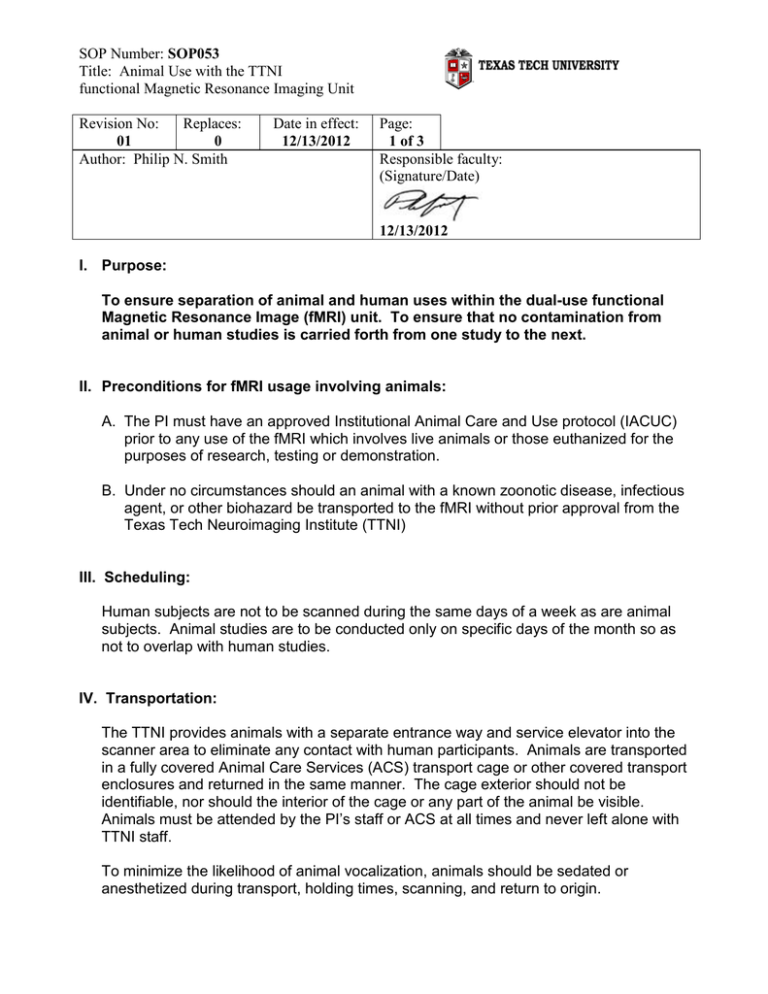
SOP Number: SOP053 Title: Animal Use with the TTNI functional Magnetic Resonance Imaging Unit Revision No: Replaces: 01 0 Author: Philip N. Smith Date in effect: 12/13/2012 Page: 1 of 3 Responsible faculty: (Signature/Date) 12/13/2012 I. Purpose: To ensure separation of animal and human uses within the dual-use functional Magnetic Resonance Image (fMRI) unit. To ensure that no contamination from animal or human studies is carried forth from one study to the next. II. Preconditions for fMRI usage involving animals: A. The PI must have an approved Institutional Animal Care and Use protocol (IACUC) prior to any use of the fMRI which involves live animals or those euthanized for the purposes of research, testing or demonstration. B. Under no circumstances should an animal with a known zoonotic disease, infectious agent, or other biohazard be transported to the fMRI without prior approval from the Texas Tech Neuroimaging Institute (TTNI) III. Scheduling: Human subjects are not to be scanned during the same days of a week as are animal subjects. Animal studies are to be conducted only on specific days of the month so as not to overlap with human studies. IV. Transportation: The TTNI provides animals with a separate entrance way and service elevator into the scanner area to eliminate any contact with human participants. Animals are transported in a fully covered Animal Care Services (ACS) transport cage or other covered transport enclosures and returned in the same manner. The cage exterior should not be identifiable, nor should the interior of the cage or any part of the animal be visible. Animals must be attended by the PI’s staff or ACS at all times and never left alone with TTNI staff. To minimize the likelihood of animal vocalization, animals should be sedated or anesthetized during transport, holding times, scanning, and return to origin. SOP Number: SOP053 Title: Animal Use with the TTNI functional Magnetic Resonance Imaging Unit Revision No: 01 Replaces: 0 Date in effect: 12/13/2012 Page: 2 of 3 Entry and exit from the fMRI suite shall be performed to prevent visualization of animal transport into the fMRI suite. To this end, one person must ensure that the fMRI suite is clear of all human subjects. Designated holding areas or routes should be identified and used whenever possible. V. Anesthesia: Scanning is to be performed under general anesthesia. Inhalational anesthesia will be performed using dedicated animal anesthesia machines only. No anesthesia machines, ventilator equipment, or tubing intended for human use can be used for animal anesthesia. However, dedicated medical gas, scavenging and/or vacuum wall supply systems can be used for animals. To minimize the likelihood of animal vocalization, animals should be sedated or anesthetized during transport, holding times, scanning, and return to origin. VI. Monitoring: Only monitoring equipment that is fMRI compatible is permitted in the scan room. NonfMRI-compatible equipment must be kept out of fMRI scan rooms or be appropriately tethered to the walls. Any special equipment or devices that are used for animals must be promptly removed from the scan room at the termination of any fMRI scan. VII. Scan Table Setup: Animals undergoing scanning procedures are wrapped in a plastic bag and rest on a custom made Plexiglas mount which segregates them from contact with the scanner table -- only the head coil is exposed and that too has a plastic wrapped support pillow inside that is either removed or cleaned thoroughly before/after use, thus posing no risk to human participants. VIII. Personal Protective Equipment (PPE): SOP Number: SOP053 Title: Animal Use with the TTNI functional Magnetic Resonance Imaging Unit Revision No: 01 Replaces: 0 Date in effect: 12/13/2012 Page: 3 of 3 Personnel involved in the project will have completed appropriate fMRI training. Lab coats, scrubs, gloves, and other PPE will be used as appropriate to the study. IX. Cleaning: Following scanning, animals are removed from the scanner and a thorough cleansing is initiated. Hand sanitizer, nitrile gloves, and lab coats are utilized. All surfaces are sprayed with a 10% bleach solution or wiped with approved disinfecting towelettes, and then wiped clean. Surfaces to be cleaned include table, power contrast injectors, all leads previously connected to the animal, all coils used, and all spills and drips on the floor. Trash and linens should be properly bagged as hazardous of infectious waste and removed to designated areas. X. Recovery, Post-Operative Care, Drugs and Solutions: These items are project specific and to be determined by the PI in consultation with the University Veterinarian or designated staff. Details should be included in the approved IACUC protocol. All drugs and solutions are either removed with the cart/animal or decanted into a biohazard box. Nothing is to be left behind after the study is completed. XI. Logbook: Personnel will record use of equipment in the logbook; records will include species, user’s name, date, times (arrival and departure), protocol number, and verification of cleanup. XII: References and Acknowledgements: This document was derived largely from an SOP entitled “Standard Operating Procedures (SOP) for Animal Imaging in the MRI Service Center Instruments” revised 6/2007, and information provided by Yiyuan Tang.
